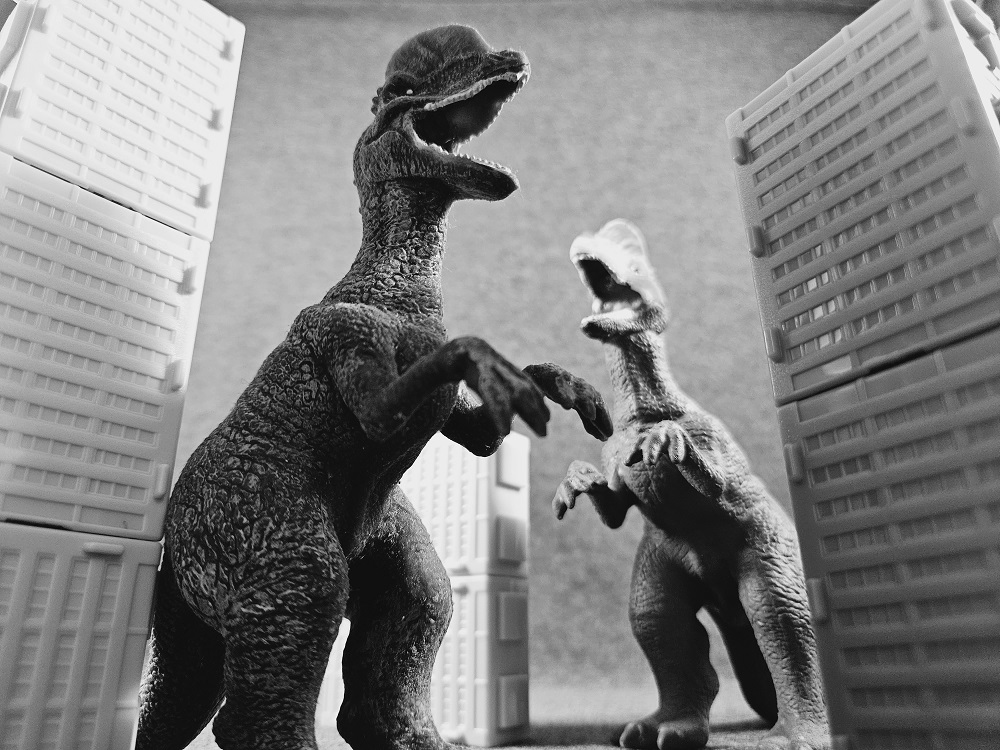
Not every dinosaur toy is equal. Not every absence of inaccuracy means inaccuracies are absent. Dilophosaurus is frequently plagued by imaginary features ingrained into pop culture due to a certain Universal/Spielberg blockbuster; but just because a toy of the two-crested reptile eschews the frills doesn’t mean the rest of the design gets a free pass. Take, for the example of this review, the De Agostini “Dinosaurs &Co.” rubber Dilophosaurus. De Agostini is a toy & collectible brand with a history spanning decades, producing items ranging from high-end car models to kids’ Disney minifigures. Around 2019 to 2020, De Agostini began releasing a line titled “Originals &Co.”, featuring sets of rubber animals themed by group. These animals didn’t seem to release in the US, but were available to markets including Italy (De Agostini’s home base) and Japan, with additional runs later being labeled “Super Animals &Co”. The “Dinosaurs & Co.” line featured not one, but two “Dilophosaurus” toys, which isn’t including a later version released under a second “Super Dinosaurs” run in select regions; regrettably, this later version added those blasted frills.
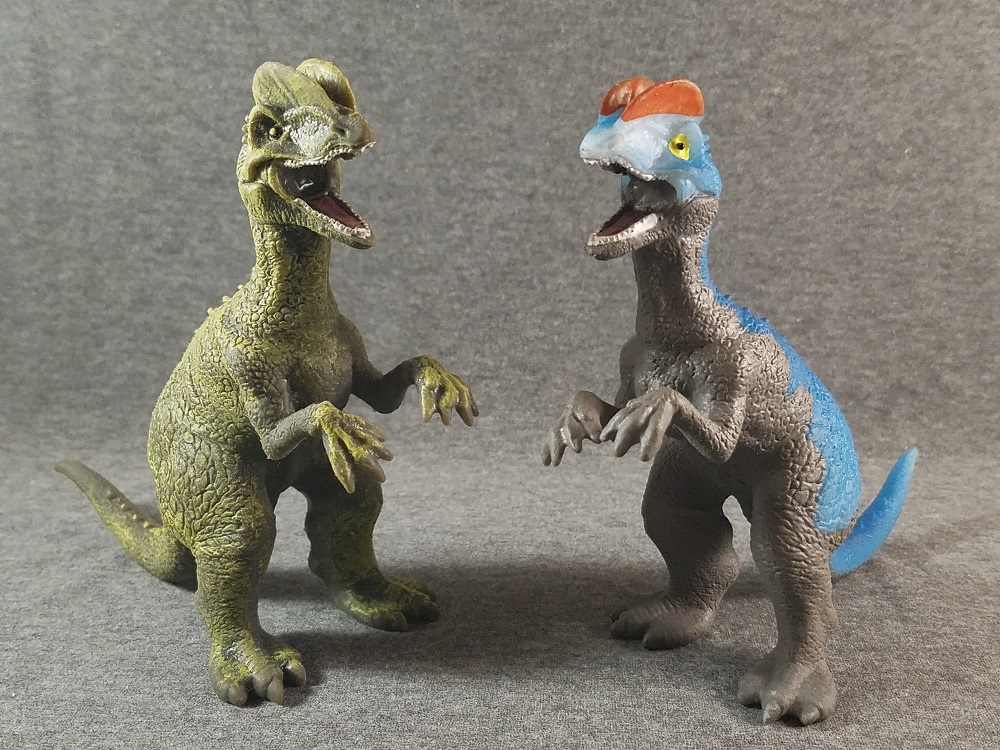
De Agostini’s “Super Maxxi” Dilophosaurus is built from hollow rubber material, with plastic bead filling for inside the torso and base of the tail. The toy originally came packaged in a blind bag, purchasable with a related magazine. Once opened, the contents of the bag would include the toy and an accompanying fold-up fact sheet. The main text on the sheet, printed in multiple languages, reads as follows in English:
- “Easily distinguishable by the rounded DOUBLE CREST on its skull, it is one of the BIGGEST PREDATORY DINOSAURS of its time. It is 7m long, weighs almost a tonne and has a streamlined, AGILE body that allows it to run quickly on its hind legs. Although it had a POWERFUL BITE, its long and relatively weak teeth do not allow it to capture strong prey.”
Later releases under the “Super Dinosaurs” moniker would include factoids complimenting the animal’s long tail, “which was used to maintain balance while running and also to attack enemies by swinging it like a whip”, and remarking on the animal being a good swimmer – all in all, not too far from the plausible truth regarding current scientific understanding. Now if only these traits were more apparent in the toy!
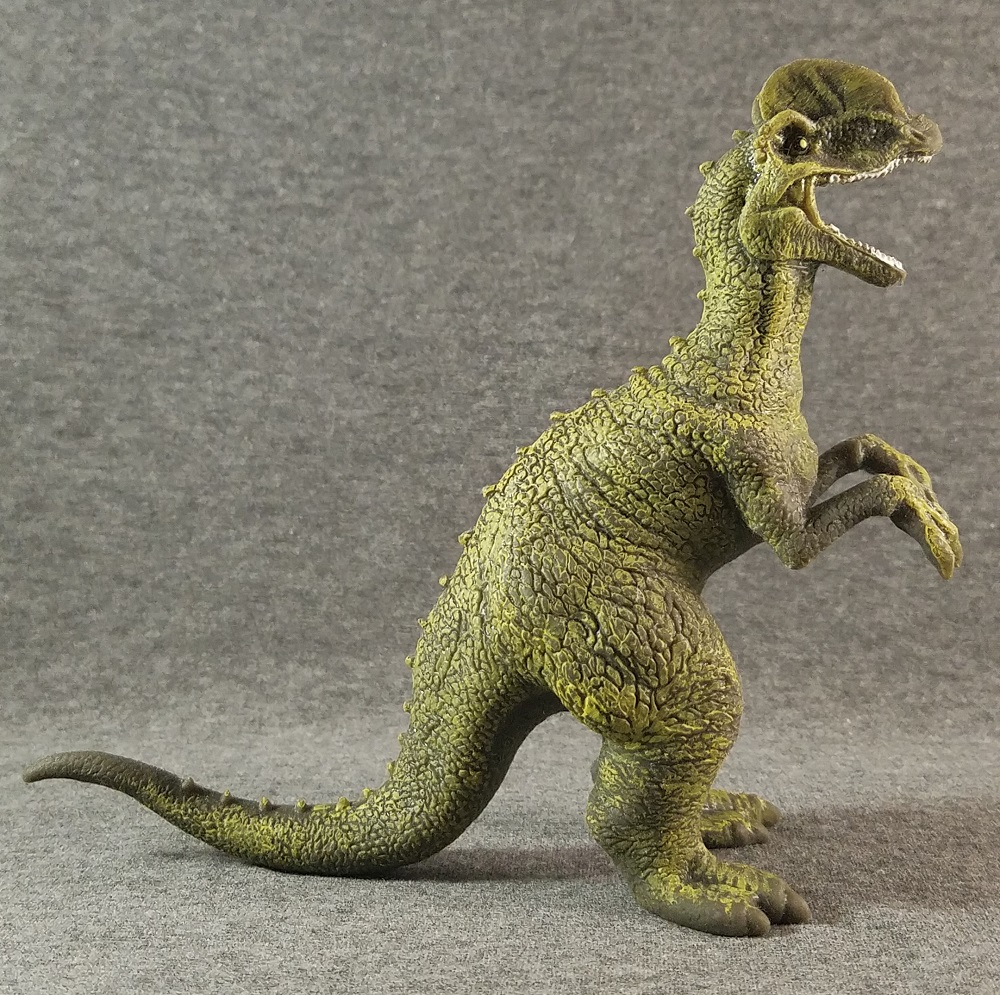
The Dilophosaurus toy stands 13.5 cm (5.25 in) tall from crest to toe; measuring along the spine, the toy stretches 21 cm (8.25 in) long, which ostensibly should put the toy in 1:33 scale to a 7-meter individual. Take just a precursory look at a skeletal, however, and it’s clear to see that the proportions of the toy are all sorts of wrong. The body is tilted upright, resting on its tail. The torso looks very stout, and the legs are heavy and squat – not exactly the picture of streamlined agility. The neck is short and straight, lacking the signature S-curve seen in theropods. The arms look atrophied, and the four-fingered hands are pronated like mammal paws. The tail is also short and under-muscled, hardly giving the impression of a whip-like weapon or a powerful paddle. The head is at least recognizable, with substantially large head crests and the distinctive notch (ie the subnarial gap) in the front of the snout. Sadly, the facial features are severely sunken, giving the dinosaur a rather ghoulish visage.
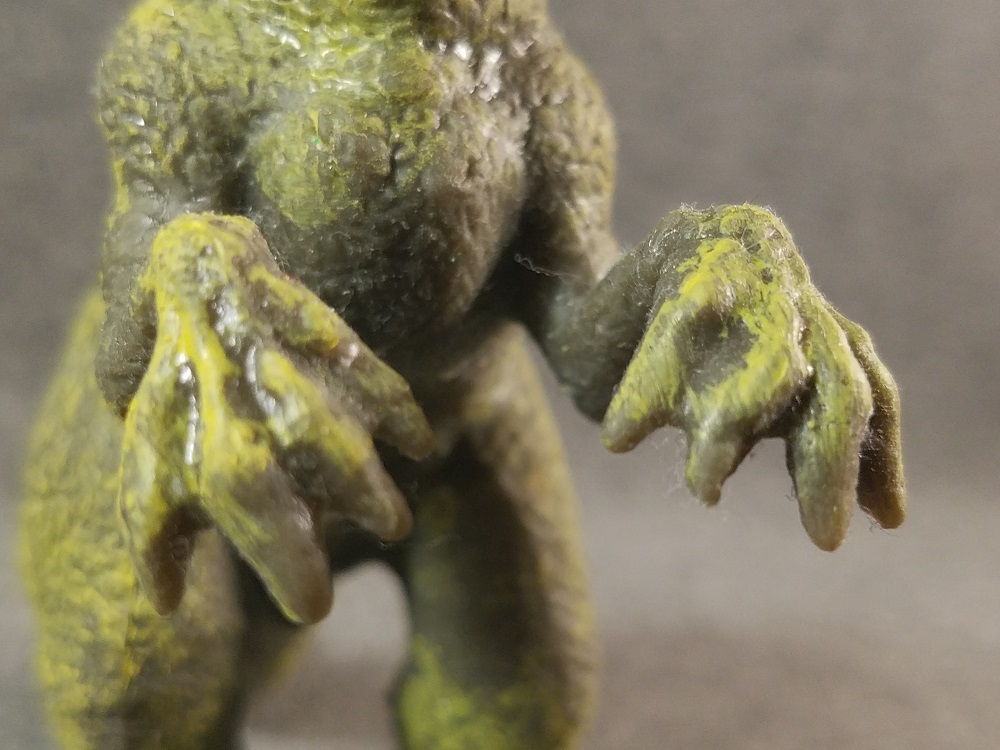
All these anatomical issues aren’t to say the toy is without merit, though. The dinosaur’s stretchy rubber skin has decent levels of scale detail across most of the body, shaped as irregular, adjacent ovaloids of varying sizes. A row of short spiked osteoderms runs down the length of the backbone. Every tooth in the mouth is distinguishable, and care has been taken to highlight the shape of the skull (even if its a little too clear and not entirely correct). Paint is more simplistic, with a wash of military green over the base gray rubber. The eyes and teeth are rather neatly painted white, and there is a red tongue inside the mouth.
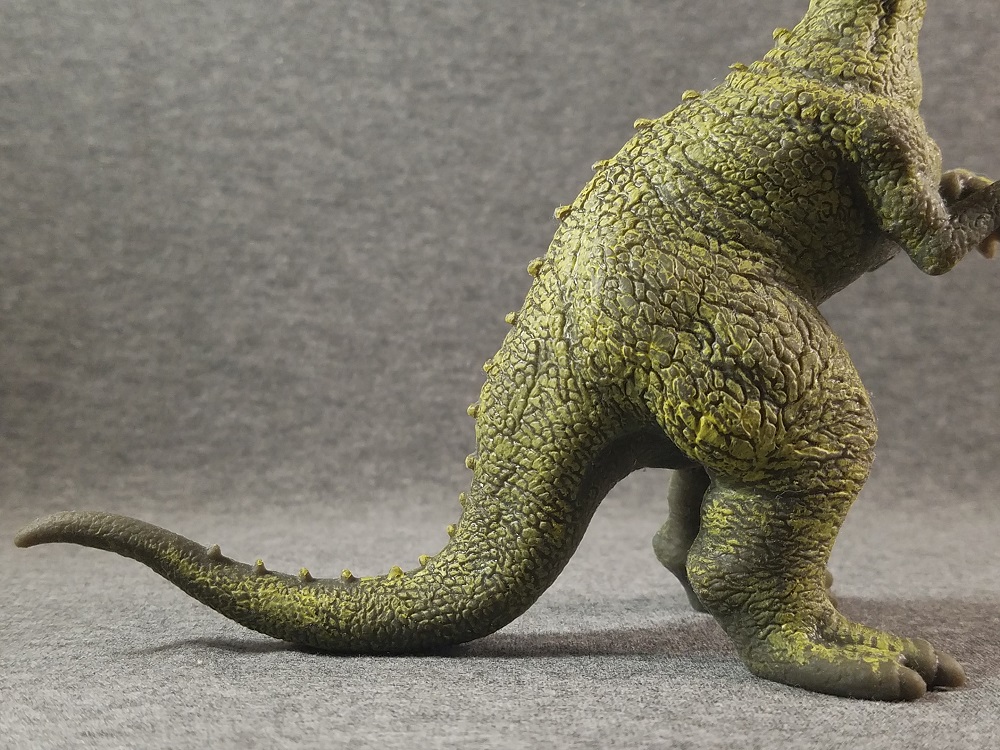
Perhaps more important than the fine details, though, is the overall aesthetic of the toy. While the “factoids” in the original packaging might feign some educational merit, this rubber toy dinosaur is, in fact, a rubber toy dinosaur first and foremost. The beady eyes bulge from the gaping sockets. The mouth gapes wide in a vicious snarl. The body stands erect with clawed hands… Er… poised for attack? Okay, it’s a bit of a stretch there (heh). My point is, what the Super Maxxi Dilophosaurus lacks in accuracy, it attempts to make up for in personality. This crested dinosaur is running on rule of cool, channeling the energy of a man-in-suit giant monster moreso than a live animal from prehistory. The toy’s rubber makeup is also perfect for roughhousing, to squash and stretch with all the enthusiasm of a rubber-hose cartoon character. This Dilophosaurus is built to be played with to all the owner’s content, in the playroom, sandbox, or wherever a child might desire. It is also, as a humorous side note, much better at balancing than many “scientific” models, thanks to its tripod stance.
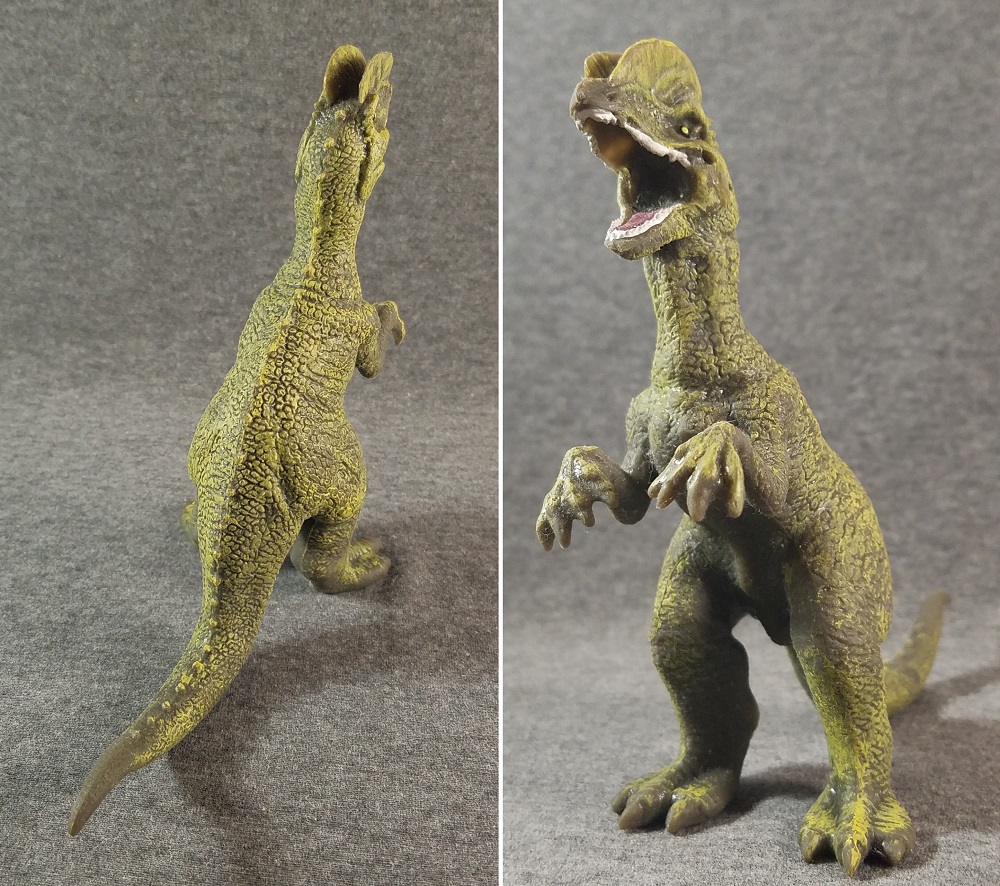
I mentioned that De Agostini produced two “Dilophosaurus” toys for the Super Maxxi Dinosaurs and co. The quotations are because, technically, the second toy isn’t Dilophosaurus, but the genus Dracovenator, borrowing the same toy mold. Dracovenator was an early neotheropod dinosaur believed to be a close relative of Dilophosaurus; but only a few fragments of the animal’s skull are known, so the full nature of the animal is ambiguous. Current reconstructions suggest a creature with a similar skull to Dilophosaurus, but with less dramatic head crests.
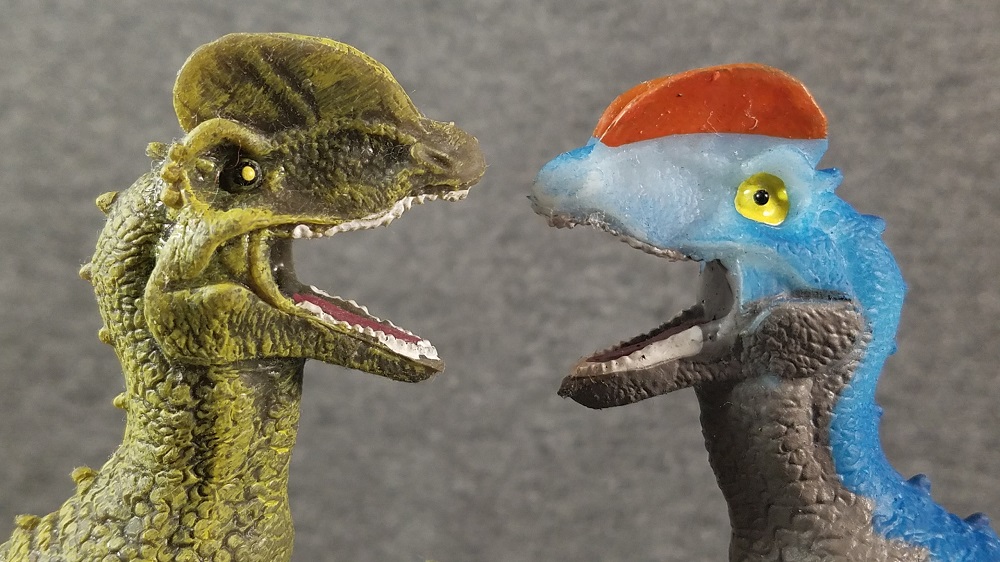
To my knowledge, the De Agostini Dracovenator might be the only toy of this genus currently in existence – which on one hand is kind of cool for De Agostini to pick such a unique dinosaur for their toy line, but on the other hand regrettable since the toy in question is so stylized. It may be needless to say, but even with such scarce fossil remains it’s unlikely the upright, baggy-legged, bunny-armed, short-tailed, screaming-demon rubber Maxxi monster is a good likeness of the real animal. It’s an amusing companion piece for the Dilophosaurus, but there’s nothing to indicate this toy uniquely represents the genus Dracovenator.

Coloration for Dracovenator is something of a downgrade from Dilophosaurus as well. The base color of the rubber is a lighter shade of gray, and the entire underside of the toy is unpainted. The sides and back are colored with a flat blue-white gradient, with no wash to bring out the mold details. The tops of the crests pop with bright red, but the eyes are sloppily painted yellow and look cartoonishly huge. The teeth and tongue are still neatly painted. In a sense, Dracovenator is the more colorful toy of the two, but because the application is poorer, the toy lacks the level of personality seen in Dilophosaurus.
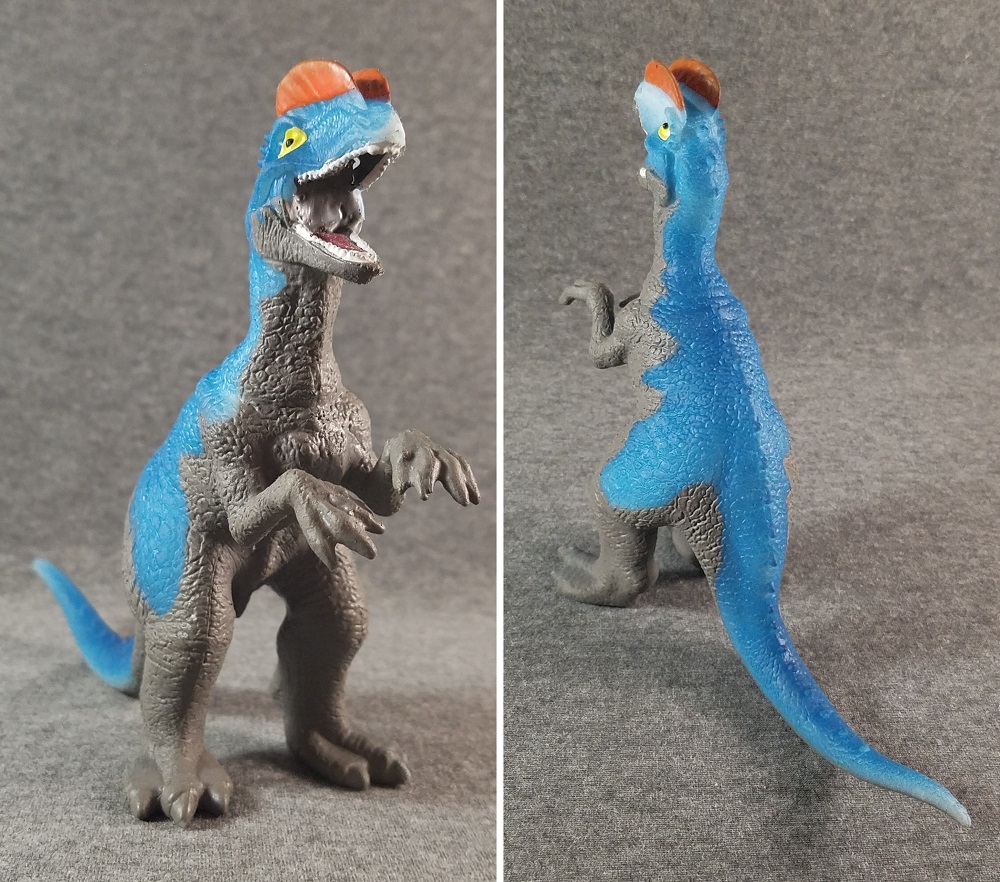
De Agostini’s Dilophosaurus and Dracovenator do not represent their respective genera at their best – not even close. The Dinosaurs &Co. line represents most of their dinosaurs less as real animals of the past, and more like escapees from old sci-fi films such as The Land That Time Forgot, The Last Dinosaur, or even King Kong Escapes. If one approaches these toys with that mindset, however, they do make for a fun couple of toys to mess around with in the right moments. Collectors who prefer scientific replicas need not linger here, but anyone who just likes novelty toys or has kids to REALLY make the most of De Agostini’s rubber dinos is sure to get a kick out of these Maxxi monsters. Since the line appears to be going defunct in its home country of Italy now, your best bet is to check marketplace websites like eBay and Mercari for acquiring your own Dinosaurs & company (evidently the line is still actively sold in Japan, but these particular two figures are not part of the lineup anymore).
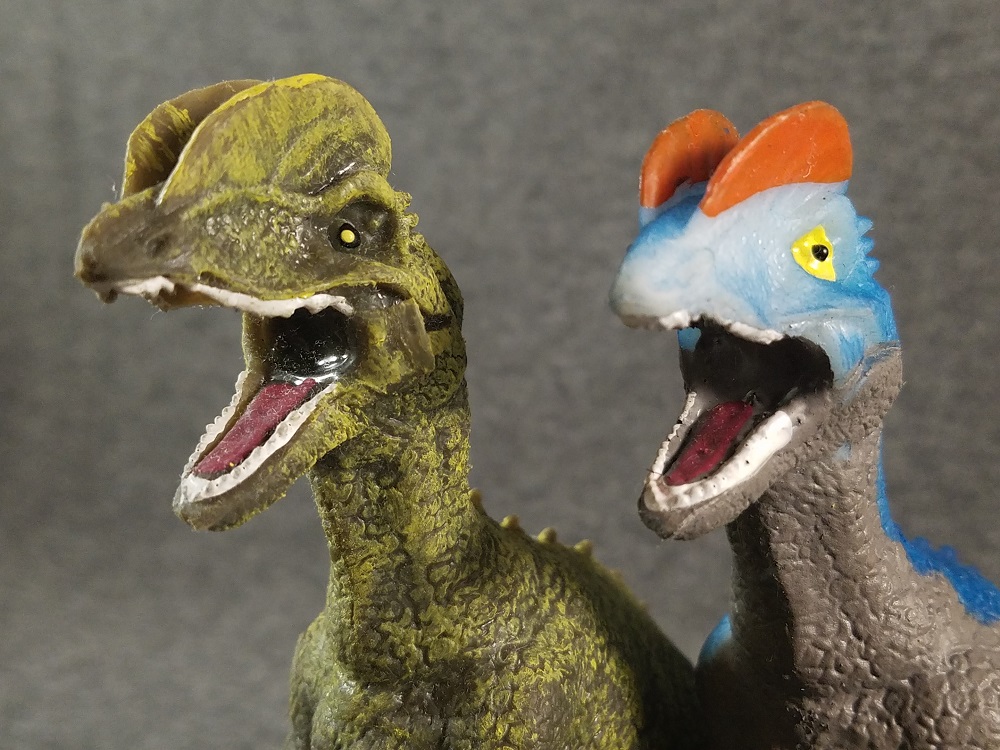
Special thanks to fellow collector Marco Brumat for helping me research this toy line for the review.
Support the Dinosaur Toy Blog by making dino-purchases through these links to Ebay and Amazon. Disclaimer: links to Ebay.com and Amazon.com on the Dinosaur Toy Blog are often affiliate links, when you make purchases through these links we may make a commission

I have a Dilophosaurus from DeAgostini, but this one is not it. Very interesting to see they had other dinosaur models.